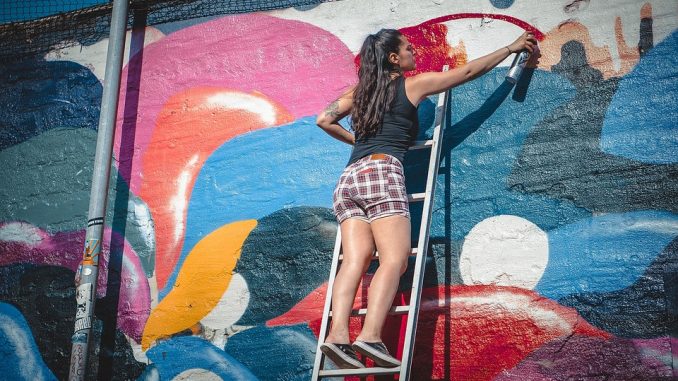
“A woman needs a man like a fish needs a bicycle.”
— Irina Dunn
Dr. Jessica Pabón opened her 2012 TEDxWomen talk with the assertion that the Australian writer first scrawled her famous quote on a bathroom wall. Performative feminism through the lens of graffiti has been a topic of study for Pabón for many years. Her upcoming book, “Graffiti Grrlz: Performing Feminism in the Hip-Hop Diaspora,” is a culmination of her work, an “ethnographic study of women who write hip-hop graffiti,” according to Pabón.
These “graffiti girls” include the likes of Renone, Claw, 7Teen, Lady Pink, ABBY106 and Donia, graffiti writers from various decades and locations, whose names may not be known by many, but whose tags have been seen countless times. For many of them, a male-centric graffiti subculture presents them with difficulties in establishing themselves the way a man might.
“Women haven’t been taken seriously as producers of graffiti,” Pabón explained. “They’re often talked about as the girlfriend or the groupie, or their bodies are hypersexualized, or they’re tokenized for being ‘different’ than other girls. Their graffiti is ‘actually good’ even though they’re a girl.”
A graffiti girl might want to make her gender clear in her work as a statement, or she may want to remain anonymous enough to not open herself up to gender-based scrutiny, despite the fact that the women graffiti writers who hide their gender are often found out anyway.
“Women who are putting their gender out there … are taking a risk with their subcultural respectability and recognition,” Pabón said. “I can’t tell you how many stories of writers who are now in their 40s and 50s who were like, ‘When I started writing, everyone thought I was this guy, and it shocked them that I was a girl.’”
Those that display their gender in their work put themselves at an inherent disadvantage, so it may be surprising to find out that many of them don’t consider themselves to be feminists at all. It matters little to Pabón, who argues that they are performing feminism — fighting sexism, uplifting women and raising social consciousness — despite not accepting the title of feminist. For her, the very act of a woman writing graffiti, openly, in a subculture that “even still today is considered a boys’ club,” is feminism in action.
“It’s more important to pay attention to people’s actions than their words,” she said. “You can call yourself a feminist but do things that are totally misogynistic.”
Instead, Pabón chooses to look at actions that aren’t being associated with feminism. She says that because graffiti girls aren’t “taking to the streets with bullhorns,” their actions aren’t seen as practiced feminism, but argues that the effects of an action are far more important.
At one point during our interview, Pabón stood up and walked over to the bookshelf in the corner of her office. “These are my books on graffiti,” she said while filing through the texts on her top shelf, “and this is the only one that’s specifically about women, not produced by the women.”
The single book Pabón handed to me was noticeably light. If someone devoting her career to exploring this subculture can only find one book on female graffiti artists, what hope does a young graffiti girl in the making have? It was, perhaps, that notion that more than anything showed me why “Graffiti Grrlz” matters in the annals of the graffiti counterculture movement.
